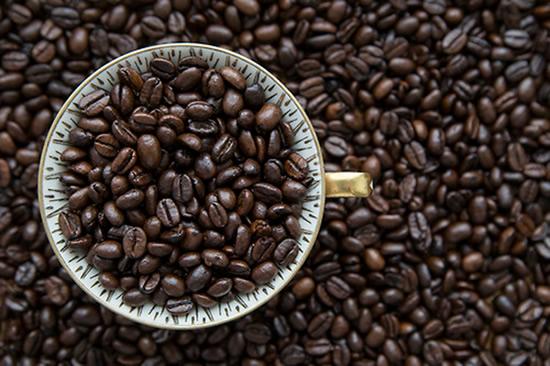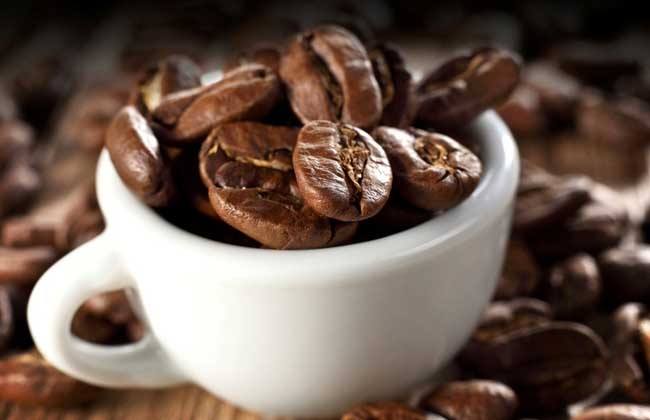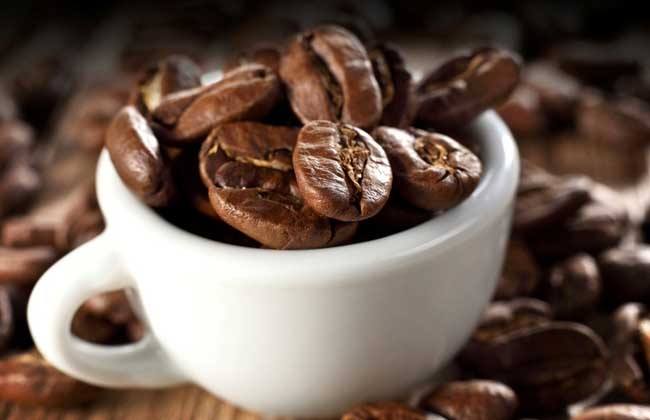The history and characteristics of Brazilian coffee
Follow the caf é (Wechat official account vdailycom) and found that Beautiful Cafe opened a small shop of its own.
Brazil: the world's largest coffee producer
"would you like a cup of coffee, Sinio?" On many occasions, Brazilians will ask you this, for example, when you visit a friend, a hospitable host will ask you; when you talk to someone about business, your business partner will ask you this; even when the mall is tired of shopping, the salesperson will ask you the same.
"Coffee cafezinho" is Brazil's favorite small cup of strong black coffee. In Brazil, buying you a cup of coffee is a habit and an important etiquette for hospitality, just like Chinese tea. Brazil is the world's largest coffee producer, known as the "coffee kingdom". It is said that the first person to discover coffee was an old shepherd in the Kafa region of Ethiopia. Because his sheep were particularly excited and active after eating a kind of red berries in the bushes, he was surprised that he also ate a few of them. I was so excited that coffee came out.

The French first transplanted the plant to French Guiana and then extended it to other places. It was not until the 18th century that Brazil, desperate for coffee seeds, did everything possible to get some mature coffee beans and five coffee saplings from Guyana, and it was the reproduction of these seeds and seedlings that made Brazil's dream of a "coffee kingdom" come true. At that time in Europe, coffee drinking has developed from a unique enjoyment of the aristocracy to the fashion of ordinary people, and the market demand has greatly increased. The soil and climate of several states in Brazil are particularly suitable for growing coffee, so coffee cultivation is growing rapidly and expanding to the southwest.
According to statistics, between 1820 and 1840, coffee production in Brazil increased by 206%, which is much higher than that in other parts of the world. For example, between 1825 and 1850, world coffee production increased three times, while Brazil increased five times. It has become the world's first coffee producer and exporter, and coffee cultivation has also become a new pillar of the Brazilian economy. Until 1960, coffee exports still accounted for 56.2% of its foreign exchange earnings. Since then, Brazil has experienced great economic development, and coffee exports still accounted for 13.8% of its total exports in 1980. No wonder Brazilians call it "green gold". When we lived in Brazil, we were invited to spend the weekend on a coffee plantation. The host accompanied us into the green coffee garden, and at a glance, the coffee trees were lined up horizontally and vertically, neatly, a bit like a Chinese tea garden, except that the coffee tree was taller than the tea tree and could grow to about 3 meters. The oval leaves were opposite, and the axils of the leaves were covered with cyan fruit. The master said that in May-June, the ripe fruit would turn red, and it would be time to harvest coffee beans. Then we visited the coffee processing process, which requires superb expertise.
Finally, the host warmly invited us into the coffee shop of the manor. A black woman brewed a cup of coffee for each of us with freshly ground hot coffee beans in the traditional way, but she felt a strong fragrance and fine taste. Its taste is not comparable to that of ordinary instant coffee. After drinking it, it is still full of aftertaste. This is the most delicious coffee we have ever had.
Brazilians love coffee and are good at drinking coffee. Coffee with hot milk is a traditional breakfast drink throughout Brazil. Brazilians call breakfast "morning coffee" (cafedamanha). They drink coffee before going to work, during meetings, and often stand in front of a street cafe for a drink when walking down the street. In short, coffee is an indispensable source of energy for most Brazilians. Small black coffee, dark color, strong flavor, mellow and delicious, it is best to add a little more sugar, as the Brazilian folk song sings: "Coffee must be as black as the devil, as hot as hell, as pure as an angel, as sweet as love." When you arrive in Brazil, don't forget to taste the delicious "Coffee Sinio"!
Characteristics of Brazilian Coffee
Brazilian coffee is a low-acidity, moderately roasted coffee bean from the World Coffee Center. As a kind of high-quality coffee, Brazilian coffee can be drunk individually or mixed.
● quality beans: Sangduo NO.2, size NO.18
The characteristics of ● taste: mild, bitter medium, soft flavor.
The best fried culture degree of ●: medium fried culture.
The taste of Brazilian coffee has a low sour taste, with the sweet and bitter taste of coffee, the entrance is very smooth, but also with a hint of grass aroma, slightly bitter in the fragrance, smooth and smooth, with a pleasant aftertaste. There are no outstanding advantages for Brazilian coffee, but there are no obvious defects. The taste is mild and smooth, the acidity is low, the mellow is moderate, and there is a hint of sweetness. All these soft flavors are mixed together. To distinguish them one by one is the best test for the taste buds, which is why many Santos fans love this kind of coffee, just because it is so mild and ordinary. Santos is suitable for ordinary baking, suitable for brewing in the most popular way, and is the best raw material for making Italian espresso and all kinds of fancy coffee.
One of the most famous is Sandos Coffee, which tastes mellow and neutral. It can be boiled directly or mixed with other kinds of coffee beans to form a comprehensive coffee. It is also a good choice.
Other kinds of Brazilian coffee, such as Rio and Parana, can be produced in large quantities because they do not require too much care. Although the taste is rough, it is a kind of high-quality and inexpensive coffee, which has its own standards because it is distributed all over Brazil and varies in quality (NO.2~NO.8 according to the number of sundries, NO.13~NO.19 according to the size of beans, and six grades according to taste). Almost all Arabica varieties are of good quality and stable in price. The most famous one is "Brazil Santos", which has been a necessity of blended coffee and is familiar to the public since ancient times. Recently, the "Guilma Cup" is also highly rated.
Although coffee is diverse, Brazilian coffee is suitable for the taste of the public. For example, coffee produced in the northern coastal areas has a typical iodine taste, reminiscent of the sea after drinking. This coffee is exported to North America, the Middle East and Eastern Europe. Another kind of coffee that is interesting and worth looking for is washed Bahia. This kind of coffee is not easy to find because Brazil is the world's largest consumer of coffee after the United States, and many of the best coffee can only be found in its domestic market.
In Brazil, the largest producer is Robbins. This kind of coffee is sold in the supermarket. Brazil's Robucht coffee, sold under the name Conillon, accounts for 15 per cent of total production.
Old bourbon coffee is grown on some estates in the Serrado district of MinasGreais in southeastern Brazil. These estates, such as Caping Blanco (CapinBranco) and Vista Allegre (VistaAllegre), grow old varieties of bourbon coffee on the market. Although they come from the same area, these coffees have their own characteristics. Capingblanco coffee is smoother than Vesta Allegre coffee, while Vesta Allegre coffee is strong and black, both of which have lower acidity. However, like all Brazilian coffee, they are most suitable for drinking when they are fresh and tender, because the older they are, the more acidic they are. These coffee growers have organized themselves into the Brazilian Special Coffee Association (theSpecialityCoffeeAssociationofBrazil).
Important Notice :
前街咖啡 FrontStreet Coffee has moved to new addredd:
FrontStreet Coffee Address: 315,Donghua East Road,GuangZhou
Tel:020 38364473
- Prev

Brazilian Coffee production, do Brazilian Coffee have Fat Powder
Following Cafe (Wechat official account vdailycom) found that Beautiful Cafe opened a small shop of its own Brazil coffee production Brazil is the most advanced and most dependent on industrial production of coffee in the world. Brazil grows 1/3 of the world's coffee trees, with an all-time high of 80 per cent of the global coffee market. The commercial scale cultivation of Brazilian coffee began in Pa, near Rio de Janeiro.
- Next

History and characteristics of Kenyan coffee beans
Following Cafe Review (Wechat official account vdailycom) found that Fairview Cafe opened a small shop of its own Kenya Coffee Bean History Africa is the third largest coffee production continent in the world, after Central and South America and Asia. African fine beans are mainly in Ethiopia, Kenya and Yemen, but the development of coffee industry in Kenya is relatively late. It was not until the beginning of the 20th century that he began to engage in it.
Related
- Detailed explanation of Jadeite planting Land in Panamanian Jadeite Manor introduction to the grading system of Jadeite competitive bidding, Red bid, Green bid and Rose Summer
- Story of Coffee planting in Brenka region of Costa Rica Stonehenge Manor anaerobic heavy honey treatment of flavor mouth
- What's on the barrel of Blue Mountain Coffee beans?
- Can American coffee also pull flowers? How to use hot American style to pull out a good-looking pattern?
- Can you make a cold extract with coffee beans? What is the right proportion for cold-extracted coffee formula?
- Indonesian PWN Gold Mandrine Coffee Origin Features Flavor How to Chong? Mandolin coffee is American.
- A brief introduction to the flavor characteristics of Brazilian yellow bourbon coffee beans
- What is the effect of different water quality on the flavor of cold-extracted coffee? What kind of water is best for brewing coffee?
- Why do you think of Rose Summer whenever you mention Panamanian coffee?
- Introduction to the characteristics of authentic blue mountain coffee bean producing areas? What is the CIB Coffee Authority in Jamaica?

